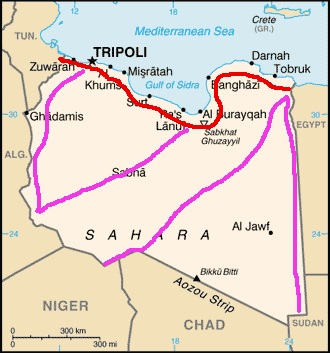
|
Libya
Aside from the occasional splatter of desert glass finding its way into a Pharoah's jewels, and the possibility of oil and precious metal deposits near the fascinating craters (Oasis and BP structures in Libya; Gweni-Fada in Chad) and crater chain (Aorounga in Chad) much of the southern 90% of Libya is really well-suited to lots of solar arrays. Once these have slowed desertification, plantations of Jatropha on marginal lands produces renewable bio-fuel and jobs. Libya would also profit by connecting the economies of Niger and Chad to the Mediterranean and the world. We think it is too late for Darfur.